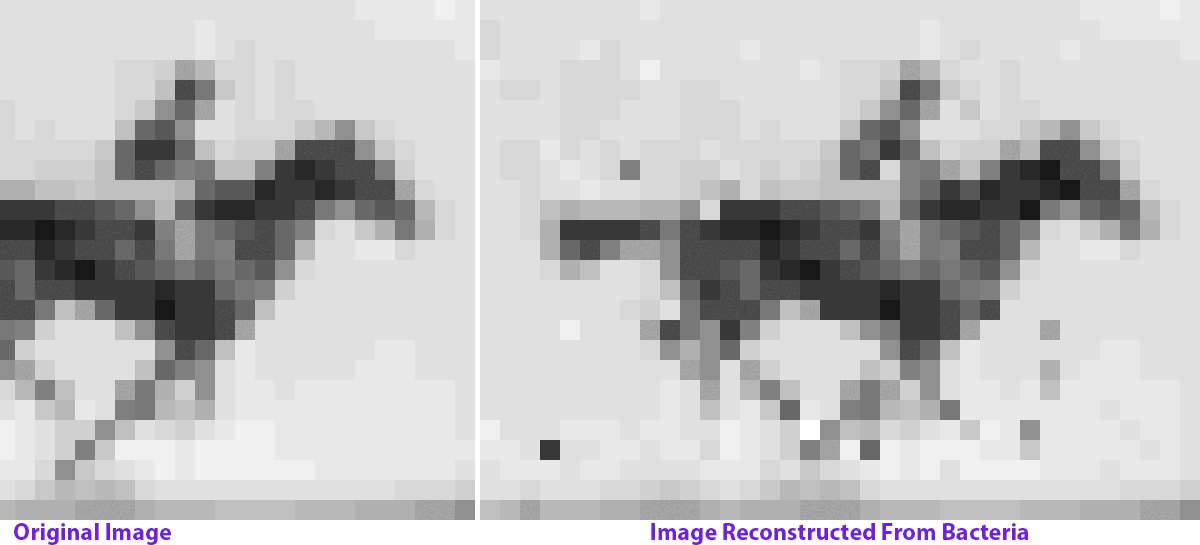
It may not look like much, but consider the fact that this GIF was encoded into the DNA of a bacterium. From a study published in Nature back in 2017, a team of scientists lead by Seth L. Shipman and Jeff Nivala used the CRISPR–Cas system to encode the pixel values of black and white images and a short movie into the genomes of a population of living bacteria.
What they did was they converted the digital information making up the .gif file (the 1s and 0s that a computer reads) and converted it into a .DNA file (to As, Cs, Ts, and Gs).
Then that information was turned into the physical piece of DNA that was stored in E coli. Let a few generations go by and take a descendant of that bacteria and read its DNA. Anyone who has the means to sequence it can retrieve the .DNA file from the organism. Then they can translate it back into a .gif format.
There is an effort to switch over to DNA to store all kinds of information since its over 100x more information dense than computer chips, and virtually indestructible. Hard drives and CDs lose information if their physical form is altered, but DNA can essentially exist in a liquid state in a test tube while still preserving the information.
